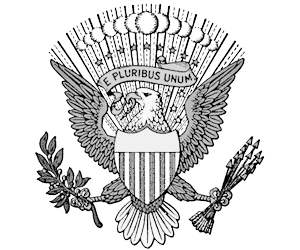|
The
Knights of Labor played an important role in the
development of the labor movement in the United States
of America bringing together workers from different
trades.
Knights of Labor History (KOL) for kids: The Origins and Uriah S. Stephens
The Knights of Labor history began in 1869 when Uriah S. Stephens
led the founding of this secret organization of
tailors in Philadelphia.
The reason that the Knights of Labor started as a secret society was
to protect its members from employer retaliations. The secrecy and
ideals of fraternalism strongly appealed to its members and
increased their belief in its importance. The secret society was
founded by Uriah St evens, the Grand Master Workman, with just eight
original members. It was a brave action to take as union members
were summarily fired during this period in US history. The Knights
of Labor began as a replacement for the failed Garment Cutters
Association of Philadelphia. The secret society spread across
Philadelphia during the early years of its history with over 80
local assemblies but by 1875 the society started to spread to other
districts.
The early Knights of Labor developed ornate rituals to preside over
their meetings, similar to those practiced by Freemasons. Membership
was restricted according to occupation and religion (it was
initially a Protestant society). The Knights of Labor members
developed a system of secret symbols and these symbols were chalked
on to sidewalks to alert members of imminent meetings. Other secret
worker organizations were being founded at this time including
including the shoemakers' Knights of St. Crispin, the miners "Molly Maguires",
the Sovereigns of Industry and the Industrial Brotherhood.
Knights of Labor History (KOL) for kids: Expansion and Change led by Terence
V. Powderly
The Knights of Labor history moved to another level by
1877 achieving national importance. Increased interest in the
organization was sparked by the
Great Railroad Strike of 1877
which highlighted the grievances of workers. Membership expanded as
other labor organizations, including those of the miners, disbanded.
In 1878 the first national officers were appointed after a
Knights of Labor convention in Reading, Pennsylvania. In 1879
Uriah Stephens resigned the position of Grand Master Workman and was
replaced by Terence V. Powderly. Under the leadership of Terence V.
Powderly the Knights of Labor underwent significant change.
The
secrecy surrounding the organization was abandoned, as were the
secret rituals, and in 1883 the leader's title was changed to the
less pretentious General Master Workman.
The Knights of Labor became better organized with a stronger sense
of purpose and their name changed to the Noble Order of the Knights
of Labor.
The Knights of Labor became a national organization open to all
workers, regardless of their skills, sex, nationality, religion or
race. The only occupations excluded from membership were gamblers,
bankers, stockholders, lawyers, and saloonkeepers.
Knights of Labor Accomplishments
Terence V. Powderly and the Knights of Labor did not initially advocate strike action but
this became common practice as the depression bit
deeper and workers became more militant.
The Knights of Labor accomplishments included winning the strikes
against the Union Pacific Railroad in 1884 and the Wabash Railroad
in 1885.
Knights of Labor Membership
The Knights of Labor membership started with just nine members. By 1880 it reached 28,000 members which swelled to 100,000 by 1885. In
1886 the membership saw a massive increase to 800,000 members in
1886 but after this time the number of members went into decline.
Knights of Labor: The Decline of the KOL
The Knights of Labor
failed to win the Missouri Pacific strike in 1886. In the same year
the Haymarket Square Riot erupted, during which a bomb exploded,
killing several policemen. Public opinion was turning against the
militant actions of the Union and the terrifying riots. Non-union
members believed the strikes and riots were nothing more than
rebellion and insurrection. Strikers were accused of being
communists who were in opposition to the American system of
government and economy. By 1900, the Knights of Labor had lost most
of their power and their support and other less radical unions
became more popular.
Knights of Labor and AFL (American Federation of Labor): Samuel
Gompers
The problems encountered by the Knights of Labor were closely
observed by Samuel Gompers, the leader of the New York City branch
of the Cigarmakers' International Union who became the key organizer
of the American Federation of Labor (AFL). Samuel
Gompers was extremely focused on achieving higher wages and improved
working conditions for workers. In 1886, Samuel Gompers met with
leaders from other unions who he persuaded to amalgamate in order to
form the American Federation of Labor (AFL). Unlike the Knights of
Labor, the American Federation of Labor (AFL) only represented
skilled workers. The AFL believed in organized and strong
negotiation tactics to obtain improved working conditions and wages
for workers. The AFL also took a far less radical approach and their
moderate, less politically motivated views and realistic goals
proved popular and at the height of its success the AFL attracted
over 3 million members. |

